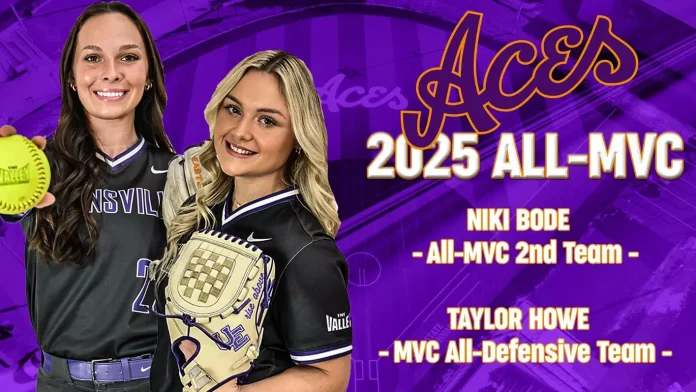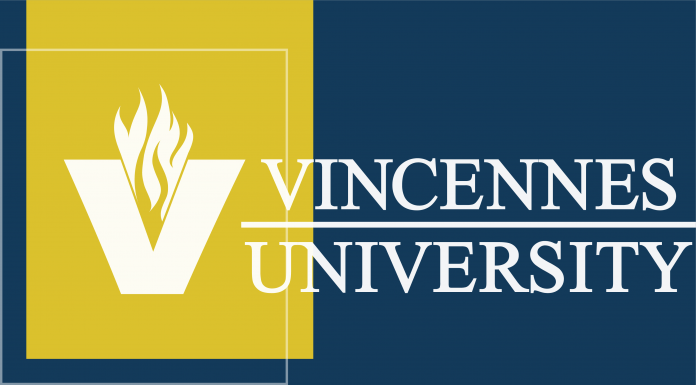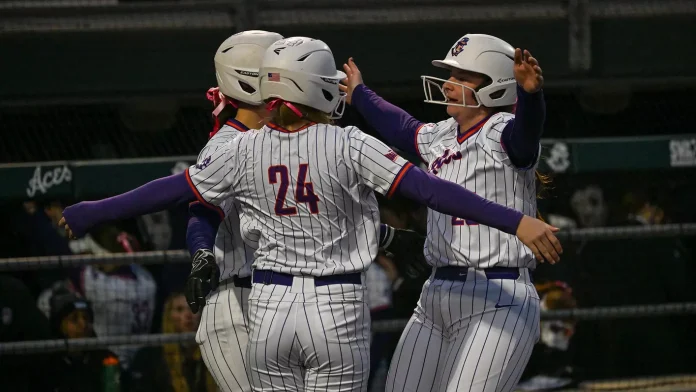VINCENNES, Ind., May 5, 2025 – Vincennes University hosted its 221st Commencement ceremony on Saturday, May 3, at the P.E. Complex. With three centuries of academic tradition and excellence, VU continues to serve as a pillar of higher education in Indiana and a launchpad for student success.
VU conferred 2,192 bachelor’s degrees, associate degrees, and certificates to the Class of 2025, with the graduates representing 73 of Indiana’s 92 counties, 34 other states, and eight countries, including the U.S.
The University also paid special tribute to The Honorable Eric Holcomb, who served as the 51st Governor of Indiana from 2017 to 2025. The University conferred an Honorary Doctorate of Public Service upon Holcomb.
VU President addresses the Class of 2025
VU President Dr. Chuck Johnson delivered a powerful message to the Class of 2025. Speaking about the enduring value and relevance of higher education, he emphasized that the fundamental purpose of education extends beyond the workforce, jobs, and the first employment after graduation.
Johnson said, “Higher education, in particular, is meant to educate you to be better people so you can make good choices and good decisions. Benjamin Franklin said, “An investment in knowledge always pays the best interest,” and I agree, but I’d like to tweak what Ben Franklin said maybe 250 years ago: “An investment in learning always pays the best interest.” William Henry Harrison knew that was important when he founded Vincennes University back when Indiana was still a territory. He wanted to ensure we were doing our best to build a future for our communities, not just our workforce, but our communities and what would become our state. Learning continues to be more important. For you and your careers, the technology is going to change, the world is going to change, and you’ve got to be prepared to change with it.”
He reminded graduates that learning doesn’t end with a VU degree or certificate.
Johnson said, “William Henry Harrison said, “Times change, and we must change with them.” Nothing can be truer than today. You must keep learning. It will be critical to your lives and your success, but it also has some other benefits. First, the value of learning comes in many forms. It’ll help you maintain career relevance. You’ll be able to move on and change even if the job you were trained to do initially is not as relevant as it was. You’ll have self-awareness, which leads to humility, and humility is the source of all human interaction and the ability for us to learn from others. It will make you a better citizen and allow you to build better communities. Finally, research has also shown that if you are a person who learns, grows, develops, and continues growing, you’re going to be happier in your life. I urge you to take this foundation you have here at Vincennes University and run with it. Continue to grow as you reach your dreams and beyond.”
VU bestows Honorary Doctorate upon former Indiana Governor
Eric Holcomb proudly accepted an Honorary Doctorate of Public Service from VU, a remarkable recognition of his contributions to the state of Indiana. This prestigious tradition of awarding honorary doctorates began at VU in 1952, highlighting individuals who have significantly impacted their fields.
It’s a proud moment for the former Indiana governor and the University, celebrating excellence and dedication to service.
Holcomb said, “Like many of you, I will forever be grateful for the partnership we established over the years. I always knew when I served as governor that I could always count on VU to deliver on whatever I might have been out pitching, whether it was around the state of Indiana, the country, or the world. When I think about all of your campuses, from Fort Branch to Plainfield to Lebanon to Fort Wayne to all the high schools you are in, your presence, and the impact and the effect that has, you really are in the center of it all. Vincennes University has become indispensable in regards to our state’s future.”
During his speech, he reflected on his ties to the University, his family’s legacy, and the momentous experience of being “on the verge.”
Holcomb’s connections to VU, the City of Vincennes, and Knox County came through boldly as he shined the spotlight on his family’s roots, which date back to the 1800s in Knox County. He fondly shared how his parents, Neil and Marcia Holcomb, who hail from Oaktown and Vincennes, respectively, met as students on the Vincennes Campus before they graduated from VU in 1961.
As Holcomb addressed the graduates and audience, his words echoed with gratitude and challenge. He reflected on living in Vincennes in the 1990s in his mother’s childhood home after serving in the U.S. Navy. He encouraged the Class of 2025 to embrace the unknown, step confidently into the future, and recognize that being “on the verge” is a moment to seize.
“As a Vincennes resident, this campus became a central part of my life,” Holcomb said. “For sure, the Navy taught me a lot, built a sturdy foundation, and got me flying straight, so to speak. But it was here in Vincennes and at Vincennes University when my adult life really started to gain focus. I suspect, like many of you. It was the first time I had this feeling that I was on the verge of something. I didn’t know if it would be small, medium, or large. But I was on the verge of something, of what came next, commencing on what and what I could make of myself. With the help of so many, including my bride, here we are all today, commencing that next chapter. I expect many of you graduates are feeling this as you think about what is ahead. You are on the verge of what life is after VU. Enjoy that feeling. Get used to it. It is going to come back to you over and over again in your lives.”
He described how authentic leadership emerges from listening to others, embracing change, and moving forward with conviction.
Holcomb said, “Listen to other people. Second, embrace innovation and the changes that come with it. Third, keep moving. Keep moving as you handle these new moments in life, especially when you are on the verge.”
Student Speaker inspires fellow grads
Marissa Bradley, a Physical Therapist Assistant graduate, delivered a heartfelt student address on behalf of the Class of 2025. She credited working in the Office of Student Activities for helping to shape her college experience. She gained meaningful friendships, mentorship, and rare opportunities through that role, such as meeting well-known bands and attending a national student government conference during Mardi Gras in New Orleans.
Reflecting on her VU journey, Bradley shared how her understanding of success evolved.
Bradley said, “Someone asked me at the beginning of this academic year, “What is something you’ll take away from your time at VU?”
“The answer I gave them then was I was excited that I got to be just a small portion of someone’s whole story and that I was able to connect with others and create lasting memories and friendships. As time went on, I came to realize the answer I gave them wasn’t the whole truth. Yes, I feel incredibly grateful that I could have made someone’s college experience just a little bit better, but that’s not the only thing. The answer I would give now is that VU was where I learned that failure is inevitable and OK. I learned that when you fail, not if, you’ll either let that failure sink you, or you can buckle on a life jacket and swim yourself to shore.”











